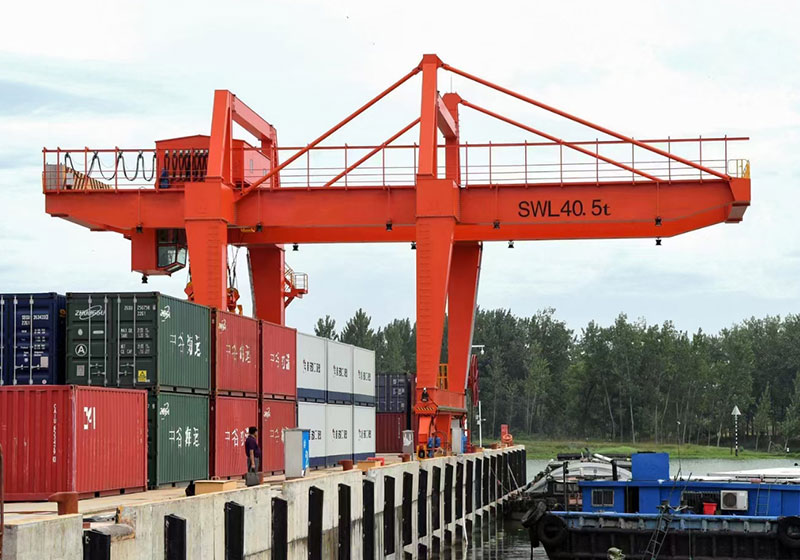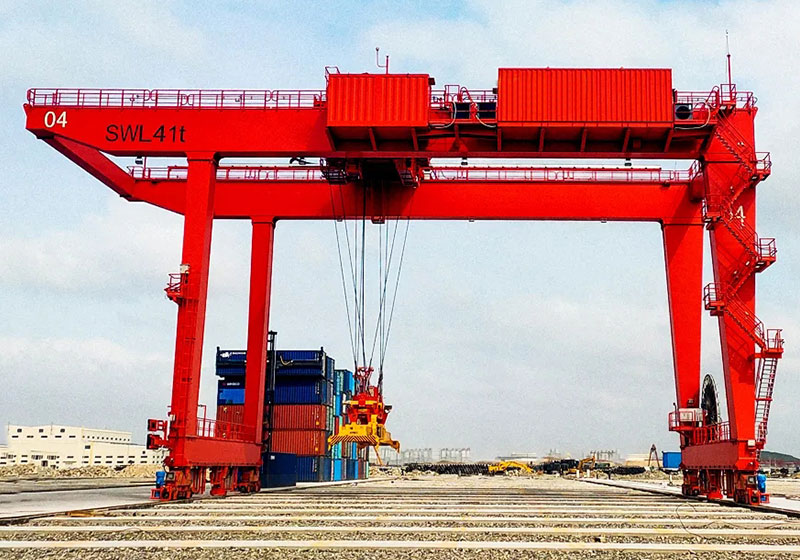When it comes to container handling, gantry cranes are one of the most essential pieces of equipment at ports, container yards, and logistics centers. These heavy-duty cranes are designed to lift and move containers of various sizes and weights, making them indispensable in facilitating smooth and efficient port operations. However, one of the most important decisions to make when selecting a gantry crane is determining the right lifting capacity. Choosing the correct crane capacity is crucial for maximizing efficiency, minimizing operational costs, and ensuring safe handling of containers. In this article, we will guide you through the process of choosing the right capacity for your container handling gantry crane.

1. Understand the Types of Containers and Their Weights
The first step in determining the right crane capacity is to understand the types of containers you will be handling and their average weight. Containers typically come in two standard sizes: 20-foot and 40-foot containers. These sizes correspond to the most common shipping containers used in the industry, but it’s important to note that there are other variations, such as 45-foot and 53-foot containers, which may also be encountered.
- 20-foot container: The standard 20-foot container, also known as a TEU (Twenty-Foot Equivalent Unit), has a weight of approximately 2,300 kg (2.3 tons) when empty and can carry up to 28,000 kg (28 tons) of cargo.
- 40-foot container: The 40-foot container, or FEU (Forty-Foot Equivalent Unit), weighs around 3,700 kg (3.7 tons) when empty and can carry up to 30,000 kg (30 tons) of cargo.
In addition to these standard containers, consider any specific container types or variations that might be part of your operations. For example, refrigerated containers (reefers), which often have additional equipment, may weigh more than regular dry containers.
2. Factor in the Container Weight and Load Distribution
Gantry cranes must be capable of lifting the full weight of the container, including its cargo. However, it’s important to remember that the load is often distributed unevenly within the container, which can affect how the crane handles the lifting process. If a container is heavily loaded on one side, it may require more stability and power to lift and move safely.
When buying a gantry crane, ensure that the gantry crane has sufficient load-bearing capability to handle the maximum weight, including any imbalances in load distribution. This is especially important when dealing with containers that are packed with heavy, bulky, or irregularly shaped items. It is also worth considering the maximum weight of containers you plan to lift during peak times or special operations.

3. Assess Operational Requirements and Throughput
The right crane capacity also depends on your port or terminal’s operational requirements and throughput. Container handling operations vary greatly in terms of volume and speed. For busy ports with high traffic, having a crane with a higher lifting capacity is essential to maintain optimal productivity.
- High throughput areas: For ports with high container traffic, cranes with lifting capacities ranging from 40 tons to 100 tons (or even more) are often required. These cranes allow for faster lifting and movement of containers, reducing delays and improving overall efficiency.
- Smaller or specialized operations: In smaller ports or terminals with lower throughput, cranes with capacities ranging from 20 tons to 40 tons may be sufficient for their daily operations.
It’s important to evaluate the size and scope of your operation when determining the lifting capacity. If you anticipate handling a large number of containers regularly, opting for a gantry crane with a higher capacity may be more cost-effective in the long run, as it will allow you to handle containers quickly without bottlenecks.
4. Consider Future Growth and Flexibility
Another key factor to consider when choosing a gantry crane is future growth and expansion. If you plan to increase your container handling capacity in the future or add new services such as heavier cargo handling, it’s worth investing in a gantry crane with a higher lifting capacity than your current needs.
Having a crane that can handle higher capacities will provide greater flexibility and allow your facility to scale without needing to replace or upgrade equipment. This can be especially beneficial for businesses anticipating increased container traffic or expansion into new markets.
5. Evaluate the Height and Reach Requirements
Container handling gantry cranes come with various reach and height options, which are essential to match the crane with your operational needs. The height of the crane should be sufficient to lift containers to the required stacking height, whether it’s for stacking containers in yards or loading/unloading ships. The span of the crane is also critical to ensure that it can reach the entire length of the container vessel or stacking area.
For large vessels, a gantry crane with a greater lifting height and span is needed. These cranes may have the capacity to lift containers 40 feet or more, depending on the type of vessel and the containers being handled.
6. Evaluate Port or Terminal Constraints
In addition to crane capacity, other operational constraints should be taken into account. The available space in the terminal or port is an important consideration because it influences the size and design of the gantry crane. A larger heavy duty gantry crane with a higher lifting capacity will require more space for movement, which might not be available in smaller terminals or ports. Therefore, it’s essential to balance the crane capacity with the available space for maneuvering.
Furthermore, environmental conditions such as wind, temperature, and humidity can impact the crane’s performance. Ensure that the gantry crane is designed to operate under the specific environmental conditions of your location.
7. Safety and Stability Considerations
Safety is always a top priority in container handling operations. When selecting a gantry crane, ensure that it comes with the necessary safety features to prevent accidents during lifting. This includes mechanisms like anti-sway technology, load monitoring systems, and emergency stop functions. Cranes with a higher lifting capacity often come with additional safety features to handle the increased weight and ensure stability during lifting operations.
The crane’s stability during operation is particularly important when handling large, heavy containers. Be sure to select a crane that offers adequate counterweights and stability systems to handle the weight distribution effectively, minimizing the risk of tipping or accidents.
8. Consult Manufacturers and Industry Experts
Finally, consult with gantry crane manufacturers and industry experts to determine the best crane for your needs. Manufacturers can provide valuable insights based on your specific operational requirements, including the types of containers you plan to handle, the traffic volume, and environmental conditions.
Manufacturers can also help assess whether additional features, such as automated systems, variable lifting speeds, and other technological enhancements, are suitable for your operations. Expert consultation ensures that the crane you choose is the best fit for your needs and provides a sound investment for the long-term success of your facility.
Conclusion
Choosing the right capacity for your container handling gantry crane is a decision that will significantly affect the efficiency, safety, and scalability of your operations. By considering the types of containers you will handle, operational requirements, future growth, environmental conditions, and safety needs, you can select the optimal crane capacity for your specific situation. Whether you’re managing a busy international port or a smaller regional terminal, choosing the correct gantry crane is key to maintaining productivity, reducing operational costs, and ensuring safe container handling for years to come.
